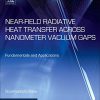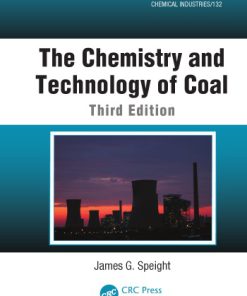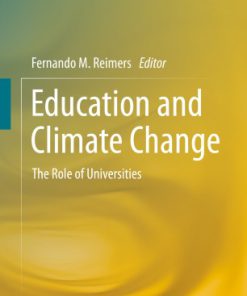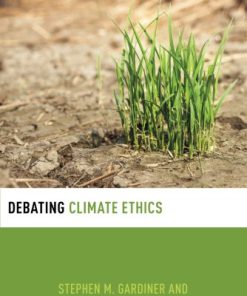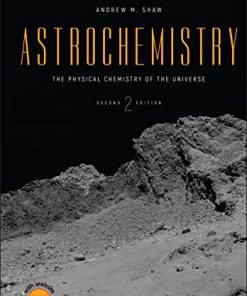Chemistry of the Climate System 3rd by Möller 3110330806 978-3110330809
$50.00 Original price was: $50.00.$25.00Current price is: $25.00.
Chemistry of the Climate System 3rd by Möller – Ebook Instant Download/Delivery ISBN:3110330806 978-3110330809
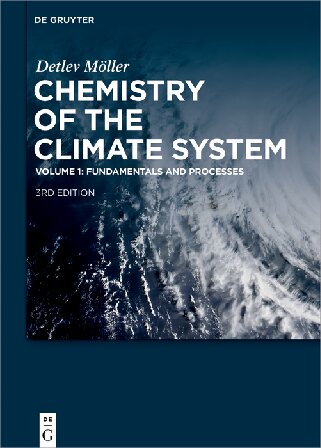
Product details:
Table of contents:
1 Introduction
1.1 Air and atmosphere – a multiphase and multi-component system
1.2 Chemistry and environmental research
1.3 A historical perspective of air, water and chemistry
1.3.1 From Antiquity to the Renaissance: Before the discovery of the air composition
1.3.2 Discovery of the air and water composition
1.3.3 Discovery of trace substances in air
1.3.4 Dust and acid rain: Air pollution
2 Chemical evolution
2.1 The pre-biological period
2.1.1 Origin of elements, molecules and the earth
2.1.2 Origin of organic bonded carbon
2.1.2.1 What is organic chemistry?
2.1.2.2 Origin of carbon
2.1.3 Origin of nitrogen
2.2 Evolution of the atmosphere
2.2.1 Degassing of the earth: The formation of the atmosphere
2.2.1.1 Volcanic gases
2.2.1.2 Gases occluded and produced from rocks
2.2.1.3 The pre-biological primitive atmosphere
2.2.2 Biosphere-atmosphere interaction
2.2.2.1 Origin of life
2.2.2.2 The rise of oxygen and ozone: Biogeochemical evolution
2.2.2.3 Photosynthesis: Non-equilibrium redox processes
2.2.2.4 A short history of understanding of photosynthesis
2.2.2.5 The carbon and oxygen pools and global cycling
2.2.2.6 Life limits by catastrophic events: Mass extinction
2.3 The earth’s energy sources
2.3.1 Solar radiation
2.3.1.1 The sun and its radiation output
2.3.1.2 Solar radiation transfer through the atmosphere
2.3.2 Absorption and emission of light
2.3.2.1 Absorption (Lambert-Beer law)
2.3.2.2 Emission (Planck’s law and Stefan-Boltzmann’s law)
2.3.3 Terrestrial radiation and radiation budget
2.3.4 Geothermal energy
2.3.5. Renewable energy
2.3.5.1 Wind energy
2.3.5.2 Water energy
2.3.5.3 Bioenergy
2.3.5.4 Comparison among earth’s energy sources – potential for humans
2.3.6 Abiogenic versus biogenic formation of “fossil fuels”
2.4 The biosphere and global biogeochemical cycles
2.4.1 Biosphere and the noosphere
2.4.2 Biogeochemical cycling: The principles
2.4.3 Global biogeochemical cycles
2.4.3.1 Nitrogen
2.4.3.2 Sulfur
2.4.3.3 Chlorine
2.4.4 What is the role of life in earth’s climate system?
2.5 The hydrosphere and the global water cycle
2.5.1 Water: Physical and chemical properties
2.5.1.1 Water structure: Hydrogen bond
2.5.1.2 Water as solvent
2.5.1.3 Water properties in relation to the climate system
2.5.2 Hydrologic cycle and the climate system
2.5.3 Atmospheric water
2.5.3.1 Water vapor
2.5.3.2 Clouds
2.5.3.3 Haze, mist and fog
2.5.3.4 Precipitation
2.5.4 Dew, frost, rime and interception
2.5.5 Soil water and groundwater: Chemical weathering
2.5.6 Surface water: Rivers and lakes
2.5.7 The oceans
2.6 Sources of atmospheric substances
2.6.1 Source characteristics
2.6.2 Biogenic sources
2.6.2.1 Vegetation and microorganisms (soils and waters)
2.6.2.2 Animals
2.6.3 The ocean as source
2.6.4 Geogenic sources
2.6.4.1 Soil dust
2.6.4.2 Sea salt
2.6.4.3 Volcanism and emanation
2.6.4.4 Lightning
2.6.4.5 Biomass burning
2.6.4.6 Atmospheric chemistry: Secondary sources
2.6.5 Anthropogenic sources
2.6.5.1 Fossil fuel use: The energy problem
2.6.5.2 Agriculture: The food problem
2.6.5.3 Land-use change and deforestation: The population problem
2.7 Emission of atmospheric substances
2.7.1 Nitrogen compounds
2.7.1.1 Ammonia (NH3)
2.7.1.2 Dinitrogen monoxide (N2O)
2.7.1.3 Nitrogen monoxide (NO)
2.7.2 Sulfur compounds
2.7.2.1 Sulfur dioxide (SO2)
2.7.2.2 Reduced sulfur compounds (H2S, DMS, COS)
2.7.3 Carbon compounds
2.7.3.1 Carbon dioxide (CO2)
2.7.3.2 Carbon monoxide (CO)
2.7.3.3 Methane (CH4)
2.7.3.4 Non-methane volatile organic compounds (NMVOC)
2.8 The human problem: A changing earth system
2.8.1 Humans historic perspective: From the past into the future
2.8.2 Changing chemical composition of the atmosphere: Variations and trends.
2.8.2.1 Fundamentals: Why concentration fluctuates?
2.8.2.2 SO2, NO2 and dust: Classic for local to regional up-scaling
2.8.2.3 CO2: The fossil fuel era challenge
2.8.2.4 CH4 and N2O: Permanent agricultural associates
2.8.2.5 Halogenated organic compounds: Sit out problem
2.8.2.6 CO: The biomass burning problem
2.8.2.7 O3: Locally believed to be solved but regional unsolved
2.8.2.8 H2O2: Mysterious
2.8.2.9 OH: The key oxidant
2.8.2.10 H2: Light but problematic
2.8.3 The carbon problem: Out of balance
2.8.3.1 The carbon budget
2.8.3.2 The CO2-carbonate system
2.8.3.3 Atmospheric CO2 residence time
2.8.4 Global sustainable chemistry
2.8.4.1 Growth and equilibrium (stationary state)
2.8.4.2 Man-made carbon cycling: Air capture and CO2 cycling
3 Climate, climate change and the climate system
3.1 Climate and climatology: A historical perspective
3.2 Climate and the climate system
3.3 Chemical weather and climate
3.4 Climate change and variability
4 Fundamentals of physico-chemistry in the climate system
4.1 Physical basics
4.1.1 Properties of gases: The ideal gas
4.1.1.1 Fluid characteristics
4.1.1.2 The gas laws
4.1.1.3 Mean free path and number of collisions between molecules
4.1.1.4 Viscosity
4.1.1.5 Diffusion
4.1.2 Units for chemical abundance: Concentrations and mixing ratios
4.1.3 Thermodynamics: The equations of state
4.1.4 Equilibrium
4.1.5 Steady state
4.2 Chemical reactions
4.2.1 Kinetics: The reaction rate constant
4.2.2 Radicals
4.2.3 Photochemistry: The photolysis rate constant
4.2.4 Oxidation and reduction (the redox processes)
4.2.5 Acid-base reactions: Acidity and alkalinity
4.2.5.1 Environmental relevance of acidity
4.2.5.2 Acid-base theories
4.2.5.3 Atmospheric acidity
4.2.5.4 pH averaging
4.3 Multiphase processes
4.3.1 Aerosols, clouds and precipitation: The climate multiphase system
4.3.2 Gas-liquid equilibrium (Henry equilibrium)
4.3.3 Properties of droplets
4.3.3.1 Vapor pressure change: The Kelvin equation
4.3.3.2 Surface tension and surface active substances
4.3.3.3 Vapor pressure lowering: Raoult’s law
4.3.3.4 Freezing point depression
4.3.4 Gas-to-particle formation: Homogeneous nucleation
4.3.5 Atmospheric aerosols and properties of aerosol particles
4.3.6 Formation of cloud droplets: Heterogeneous nucleation
4.3.7 Scavenging: Accommodation, adsorption and reaction (mass transfer)
4.3.7.1 Mass transfer: General remarks
4.3.7.2 Adsorption
4.3.7.3 Surface chemistry: Kinetics of heterogeneous chemical reaction
4.3.7.4 Mass transfer into the droplet with chemical reaction
4.4 Atmospheric removal: Deposition processes
4.4.1 Dry deposition
4.4.2 Wet deposition
4.5 Characteristic times: Residence time, lifetime and turnover time
5 Substances and chemical reactions in the climate system
5.1 Introduction
5.1.1 The principles of chemistry in the climate system
5.1.2 Substances in the climate system
5.2 Hydrogen
5.3 Oxygen
5.3.1 Atomic, molecular oxygen and ozone: O, O2 and O3 (Ox)
5.3.2 Reactive oxygen species I: OH, HO2 and H2O2 (OxHy species)
5.3.2.1 Atmosphere, free of trace species
5.3.2.2 Atmosphere with trace species
5.3.3 Reactive oxygen species II: RO, RO2 and ROOH
5.3.4 Water and the hydrated electron: H2O and H2O- (ea-q)
5.3.5 Aqueous phase oxygen chemistry
5.3.5.1 From dioxygen to peroxide (O2 chemistry)
5.3.5.2 From ozone to hydroxyl (O3 and O1 chemistry)
5.3.6 Multiphase oxygen chemistry
5.3.6.1 Historical remarks
5.3.6.2 Hydrogen peroxide
5.3.6.3 Ozone
5.3.7 Stratospheric oxygen chemistry
5.4 Nitrogen
5.4.1 Thermolysis of nitrogen: Formation of NO
5.4.2 Ammonia (NH3)
5.4.3 Dinitrogen monoxide (N2O)
5.4.4 Nitrogen monoxide (NO), nitrogen dioxide (NO2) and oxo acids
5.4.4.1 Gas phase chemistry
5.4.4.2 Aqueous phase and interfacial chemistry
5.4.5 Organic nitrogen compounds
5.4.5.1 Amines and nitriles
5.4.5.2 Organic NOx compounds
5.5 Sulfur
5.5.1 Sulfides (H2S, CS2, COS, RSH): Reduced sulfur
5.5.2 Oxides and oxoacids: SO2, H2SO3, SO3, H2SO4
5.5.2.1 Gas phase SO2 oxidation
5.5.2.2 Aqueous sulfur chemistry
5.5.3 Multiphase sulfur chemistry
5.6 Phosphorus
5.7 Carbon
5.7.1 Elemental carbon and soot
5.7.2 C1 chemistry: CO, CO2, CH4, CH3OH, HCHO, HCOOH
5.7.3 C2 chemistry: C2H2, C2H4, C2H6, C2H5OH, CH3CHO, CH3COOH, (COOH)2
5.7.4 Alkenes, ketones and aromatic compounds
5.7.5 Is the atmospheric fate of complex organic compounds predictable?
5.8 Halogens (Cl, Br, F and I)
5.8.1 Gas phase chemistry
5.8.2 Aqueous and interfacial chemistry
5.9 Other elements
6 Final remark
Appendix
A.1 List of acronyms and abbreviations found in literature
A.2 Quantities, units and some useful numerical values
A.3 The geological timescale
A.4 Biography
People also search:
You may also like…
Computers - Hardware
Biology and other natural sciences - Plants: Agriculture and Forestry
Education Studies & Teaching - School Education & Teaching
Education and Climate Change: The Role of Universities Fernando M. Reimers
Engineering
Surface Chemistry of Carbon Capture-Climate Change Aspects 1st Edition K. S. Birdi (Author)
Politics & Philosophy - Anthropology
Astronomy - Astrophysics & Space Science
Astrochemistry The Physical Chemistry of the Universe 2nd Edition Andrew M. Shaw
Medicine - Veterinary Medicine
The Clinical Chemistry of Laboratory Animals, Third Edition David M. Kurtz



